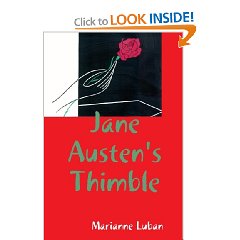http://www.oocities.org/scribelist/do_we_have_.htm
Ever since Dr. Hawass et al published the JAMA paper on the DNA of the family of Tutankhamun, there has been, among the online Egyptolophiles, the knee-jerk reaction that, because she has now been confirmed as a daughter of Amenhotep III and Queen Tiye, the mummy the "Younger Lady from KV35" cannot possibly be Queen Nefertiti. But the fact remains I first got the idea that KV35YL could be Akhenaten's wife because of physical resemblances of the remains to her portraits. There are quite a few, and I point them all out in my paper. I do admit to having had doubts that the KV35YL can have been a daughter of Amenhotep III and Queen Tiye because their [at the time purported but now confirmed] mummies are excessively short in stature and the KV35YL is taller. At 5' 2", the YL is taller than her father and certainly taller than the 4' 9" Queen Tiye.
But here's the thing. No matter what arguments people line up against the KV55 individual and the KV35YL being Akhenaten and Nefertiti, it seems an undisputed fact that Amenhotep III and Queen Tiye had a daughter who looked like Nefertiti, possessed the physical attributes evidenced by that lady's portraits [when she was allowed to look like herself and not like a strange version of Akhenaten]. Put differently, Amenhotep III and Queen Tiye were capable of engendering a Nefertiti or someone who resembled her greatly--down to the extraordinarily long, swanlike neck. Logic and DNA dictate it must be so. After I had proposed that the KV35YL might be Nefertiti, another woman, Susan James, took a good look at the Elder Lady and concluded that *she* looked like Nefertiti and advocated this identification. There is no hope for Ms. James' theory now, evidently, but perhaps James' perception of a resemblance was not far off the mark. For more, please do a search on the blog post "Tutankhamun's Family Tree--the Possibilities" here.
Granddaughter, Danya, making obeisance to the royals
Granddaughter, Danya, making obeisance to the royals









2 comments:
The new ancientDNA actually confirms your identification of KV 35 YL as Nefertiti. As a Sister of Amenhotep IV. Akhenaton it would have been considered “normal” in ancient Egypt, that she will become the Great Royal Wife of the King, and therefore it’s only logical that KV 35YL must be identified as Nefertiti (and not as Kija). Resemblance and face reconstruction from Joann Fletcher also point to this solution.
Only one “problem” left: We only know four daughters from Amenhotep III. by name: Sat-Amun, Isis, Henut-Tau-neb and Nebet-ah. This problem can be solved: Nefertiti’s and Akhenatons first child, princess Meritaton was born in year 1, but the name “Nefertiti” appears on the walls of the Gem-pa-Aton-temple in Karnak for the first time, about year 3 under Amenhotep IV. Therefore the queen must have a previous birth name and changed it into Nefertiti. (The full name is Nefer-Neferu-Aton Nefertiti, which is clearly a theological name, especially designed for the new religion). Her husband changed his name some time later, as many of the new followers of Atenism.
Therefore I’m quite sure, that your identification of KV 35YL as Nefertiti is true and I also published this opinion in 2011. All the other theories had a severe lack of evidence. Maciejewski for example thinks that KV35YL is Sat-Amun and become Kija afterwards. First part OK, Kija is questionable. Some others try to construct a theory, that Nefertiti is the daughter of Ay. But the mummy of Ay and his wife Tjj are missing (no DNA proof possible), and Tjj is known als “Nurse” of Nefertiti, not her mother...
Hello Michael,
I just discovered your comment. You are right in that we only know the names of a few daughters of Amenhotep III and Queen Tiye--and you may well be correct in that one had a name change. However, in the tomb of Kheruef, there are eight daughters shown. All over the Net there is confusion saying "maybe" these are the daughters of foreign dignitaries--but actually there are two separate scenes in the tomb, one with the royal daughters and another with the foreign girls and the hieroglyphic texts distingish which is which. So maybe one or more daughters of the royal pair exist and, in sum total, a polygamist like Amenhotep III probably had more than eight daughters by all his wives in his entire liftime. That by Year 30 only 8 were depicted in the tomb may mean these were the ones of highest status.
Post a Comment